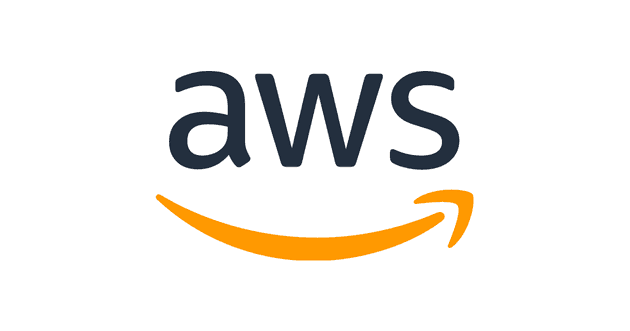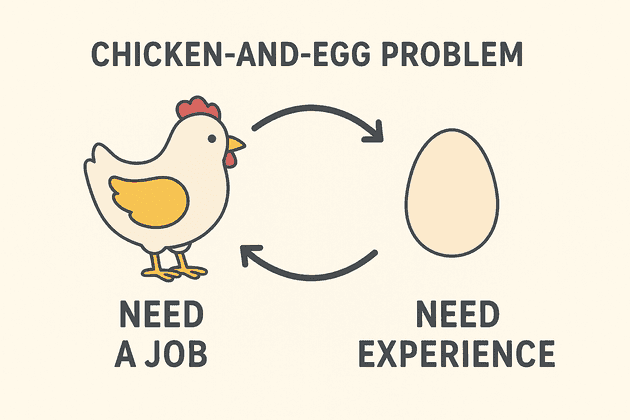This is Part 2 of 3 in a series of articles detailing my journey to Amazon. You can read Part 1 here.
Intro
In this part of the journey, I share how I landed my first programming job early on the path to Amazon, the impact of having a strong mentor, and how the power of networking opened new doors.
Hunting for my first job
Tutoring
My first job as a student was nothing fancy—math tutoring. I worked with around 10 school students, preparing them for university entrance exams during my first two years at university. But let’s be honest, this wasn’t a programming job. Landing a programming job felt like a classic chicken-and-egg problem: you needed experience to get a job, but you needed a job to gain experience.
Training & Internship programs
Fortunately, representatives from several IT companies would visit our university to give talks—and sometimes, they introduced training programs or internships that came with the potential for a job offer at the end. I passed the entrance exam and was accepted into a training program in Data Science and AI. The course lasted six months, and at the end, we took a final assessment. A month later, I received an email—I had passed.
And then… nothing.
For a full month, there was silence. Eventually, they got back to me—with a message I didn’t expect: “We no longer need a Data Science person. Good luck.” 🥲
Found first real projects
That summer, during the holidays, I also learned the Node.js runtime—which later became my primary technology in all of my future jobs—and explored how to build Telegram bots using it. A few months later, I landed my first real project: building a Telegram Bot for a pharmacy store to manage inventory, orders, and deliveries. I was beyond excited and delivered the first MVP within a week. Two weeks later, I completed the system integration—and we released it to production. It was a success: the business owner shared great feedback, saying the bot was already helping boost sales. 🚀
Around this time, Makhmudjon (from our group of three) was working at a company developing an enterprise system. They were looking for a Node.js engineer and a front-end developer for a few new projects. Makhmudjon referred both me and Saidakbar—and soon after, we joined the team and started working on those projects. Looking back, this was one of the most pivotal moments in my career. I tackled tough problems under tight deadlines, learned to communicate with stakeholders and had to quickly learn entirely new technologies—sometimes from scratch. I wrote about one of those experiences in an article on my blog.
Landing a job in an international company
In July 2020, just before starting my final year at university, I applied for a backend engineer role at the South Korean AI company 3i.ai. By then, I had built a portfolio of four real-world projects—shipped to production and serving hundreds to thousands of users. First, I passed the coding and system design interviews. Two weeks later, I got a call from the head of HR—they told me I was getting the offer. 🎉 This marked another major milestone in my career—my first offer from an international company!
At 3i.ai, I got the opportunity to work on projects related coolest technologies, like AI, Augmented Reality and Virtual Reality. I was fortunate to have an excellent team lead and mentor, Sardorjon Vakkosov, who introduced me to cloud computing and AWS. I was given the opportunities to work on deliverables related to distributed image processing, serverless functions (AWS Lambda, AWS SAM) and others. This was the first time I developed a genuine interest—and growing curiosity—in how AWS services work under the hood: from compute and storage to networking and scalability.
I worked at 3i.ai through the end of my final year at university. After graduating in the top 2% of my class, I said goodbye 👋 to both university life and my role at 3i.ai—something new was waiting just around the corner…
Post-University
Working with the bigger names
EPAM Systems
After leaving 3i.ai, I started my Day 1 at EPAM Systems. At EPAM, I worked on a project for a British luxury clothing company, collaborating with top industry experts from the UK and the Netherlands. I was responsible for modernizing an enterprise system, including integration with various AWS services. EPAM also offered valuable internal programs to support employees in earning prestigious IT certifications. Taking full advantage of these resources, I prepared for and successfully earned the AWS Certified Developer – Associate certification – becoming one of the first few professionals in Uzbekistan to have these certifications at the time.
eTeam.io
A year later, I joined eTeam.io, where I contributed to the development of an innovative low-code platform designed to enable customers build business & enterprise apps without having coding skills. This became one of my favorite projects to date—we combined graph theory, optimization techniques, and scalable architecture to deliver a powerful set of features requested by stakeholders.
Toptal
Around the same time, I also received an offer from Toptal, the world’s leading freelancing platform that accepts only the top 3% of global talent—having successfully passed all 4 stages of their rigorous interview process. Toptal also had a program to help obtain AWS certifications, I also used this opportunity pass an exam and earn AWS Certified Solutions Architect – Professional.
The Toptal interview process deserves an article of its own! You can read Laziz’s article on the same describing his great interview experience with Toptal.
I believe my strong foundation in AWS played a key role in securing nearly all of these opportunities—allowing me to confidently design, explain, and implement complex cloud architectures both in interviews and on the job.
One more thing… Importance of Soft Skills
To close out Part 2, I want to highlight the importance of developing strong soft skills. The wide range of experiences and diverse expertise I gained from these companies and projects described above later proved invaluable—especially during behavioral interviews. It’s a good habit to regularly reflect on the challenges you face at work and the steps you take to resolve them. These day-to-day situations often become the core of the stories you’ll share during interviews. In the end, it’s not just your technical skills—interviewers are also evaluating how you approach problems, lead initiatives, and work with others.
Alright, that’s it for Part 2. See you in Part 3 🤝—where I’ll finally put everything I’ve learned into action and take the final step toward turning my dream into reality ✨.

